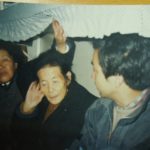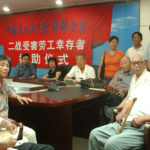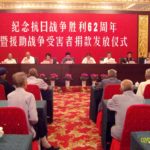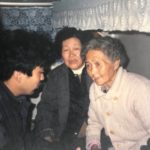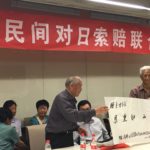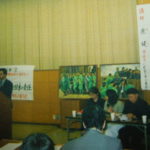
Background History:
During the Second Sino-Japanese War (September 18, 1931 – September 2, 1945), the Japanese military inflicted massive and inhumane atrocities in China, as well as other parts of Asia. The number of Chinese killed was about 25-30 million, and millions of Chinese women and girls were raped. This atrocious history included the Nanking Massacre, comfort women (euphemism for sex slaves), biological and chemical weapons of mass destruction, vivisections on live humans, and slave labor. (More information about the Second Sino-Japanese War can be found in the “History Overview” page).
More than seventy years have elapsed since these atrocities, among the most massive and inhumane massacres in the history of mankind. Yet, Japan still has not acknowledged or apologized to the victims. Instead, the Japanese government has continued to try to whitewash this part of history, repeatedly making statements that contradict the few earlier statements expressing acknowledgment and apology. For example, they continue to make statements like “the Nanking Massacre was just the natural consequence of war,” “it was fabricated by the Chinese,” “comfort women were paid prostitutes,” etc. Japanese leaders, including her prime ministers, pay tribute at the Yasukuni Shrine in Tokyo where 14 Class A convicted and executed war-time Japanese criminals are enshrined. This is analogous to the German chancellor paying tribute at a memorial site for Adolf Hitler. This part of history is also not discussed in Japanese textbooks so that generations of Japanese growing up never learned about this part of history.
Origin of Project: This project was initiated in 1990 when Mr. Tong Zeng (童增), a young, concerned and patriotic Chinese, with a master degree in law, investigated various international legal cases and issues regarding compensation related to atrocities committed during a war by one country on the citizens of another country. After finding various precedents of victims of one country receiving compensation from the government of another country who committed the atrocities, he concluded that the Chinese citizens who were victims of Japanese atrocities during the Second Sino-Japanese War have every right to seek compensation from Japan (from the Japanese government or in the case of slave labors, also from the Japanese corporations who used the slave laborers). In particular, he distinguished the case of the Chinese government seeking compensation from Japan and the case of Chinese citizens seeking compensation from Japan. This means that when the Chinese government, as a gesture of good will, waived her right to seek compensation from Japan when the two countries established diplomatic relations in 1972, the Chinese government waived only the right of the Chinese government seeking compensation from Japan. It did not waive the right of Chinese citizens seeking compensation from Japan.
In July 1990 he summarized his findings in a white paper “China Demands Japan to Compensate Atrocity Victims” 《中国要求日本”受害赔偿”刻不容缓》. He sent his white paper to several newspapers in China, but none reported it.
Then in late March 1991 he sent his white paper to the National People’s Congress (NPC) which was meeting in Beijing at that time, and he also alerted the press. This time the newspaper “Ming Bao” (明报) in Hong Kong published on March 30, 1991 a short article about it . A couple of days later, he and one of his students Chen Jian (陈健) also distributed copies of his white paper to various delegates on their way to attend the NPC. Several of the NPC delegates liked his proposal and submitted it as an item for discussion at the NPC. Although this issue was not discussed at the 1991 NPC because it was submitted after the deadline for submission for the 1991 NPC, the media coverage of this white paper, especially after the 1992 NPC, ignited a brush fire across the whole country. For an example of a media article in 1992, click here.
Seeking compensation for the atrocities committed by the Japanese military was a long-overdue item for seeking justice and closure that has been buried in the hearts and souls of thousands and thousands of Chinese atrocity victims and their relatives. Thousands of people wrote to Tong Zeng endorsing and thanking him for his proposal and wrote to him providing details of the atrocities that they or their family members had experienced. Within a few years, he had received about 10,000 such letters. This is why this project/website is called “10000 Cries for Justice.”
For a description of how this project became a collaborative project between people in China and people in the U.S., see the “About Us” page.
Project Objective and Significance:The objective of the project is to create a digital archive of the written history from the victims crying for justice, and make available to the world these thousands of letters that Mr. Tong received 20+ years ago. This digital archive documenting the first-hand experience of the victims provides powerful evidence to refute all the false claims made by the Japanese government. It provides a powerful tool to learn from history. By finally resolving the long-overdue injustices, it will help to establish genuine friendship between the Japanese people and the Chinese people, and true peace between Japan and China,as well as other countries.
The consequence of not learning from history is that people will follow the same path and history will repeat itself. We don’t want this type of history to be repeated anywhere on earth.




